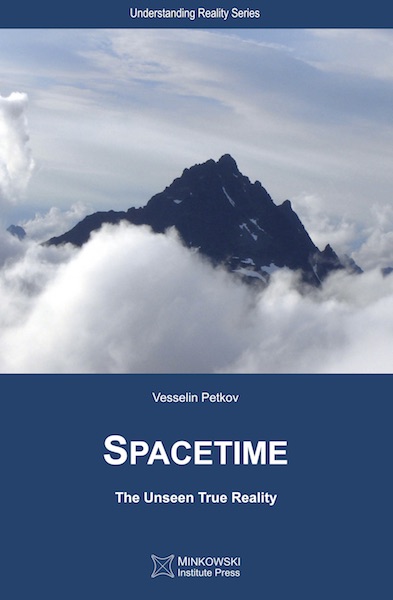 |
|||||
|
|||||
|
|
The views of space and time which I want to present to you arose from the domain of experimental physics, and therein lies their strength. Their tendency is radical. From now onwards space by itself and time by itself shall completely fade into mere shadows and only a specific union of the two will still stand independently on its own.
Description:
Hermann Minkowski
Beyond the divisions of time and space which are imposed on our experience,
I see it, but I don't believe it.
Things are never quite the way they seem. The book first analyses rigorously Hermann Minkowski's arguments that the introduced (rather discovered) by him physical concept of spacetime represents a real four-dimensional world, which turns out to be a higher true reality that is unseen in a sense that at every moment of time (at the constantly changing moment 'now') we perceive only glimpses of it, but cannot see even a small four-dimensional region of the higher reality; what we see is only three-dimensional cross-sections of it. The second part of the book consistently employs Minkowski's program of regarding physics as spacetime geometry to the analyses of gravitational and quantum phenomena, which makes it possible to obtain deeper understanding. Although this book is written for all genuinely interested in what physics tells us about the physical world in a rigorous but accessible to a wider audience language, it may not be for everyone. It is certainly for open-minded readers who are not afraid to question their beliefs and accepted views when presented with compelling arguments based on the experimental evidence. Regretfully, the book is not for over-confident readers (whose formal education is often irrelevant), unless the arguments in it open up their eyes, who readily dismiss any views different from theirs without even trying to understand the arguments on which such views are based; the typical explicit or implicit reaction (not arguments) of such readers is effectively "this cannot be because it cannot be," which is neither science nor common sense.
|
||||
